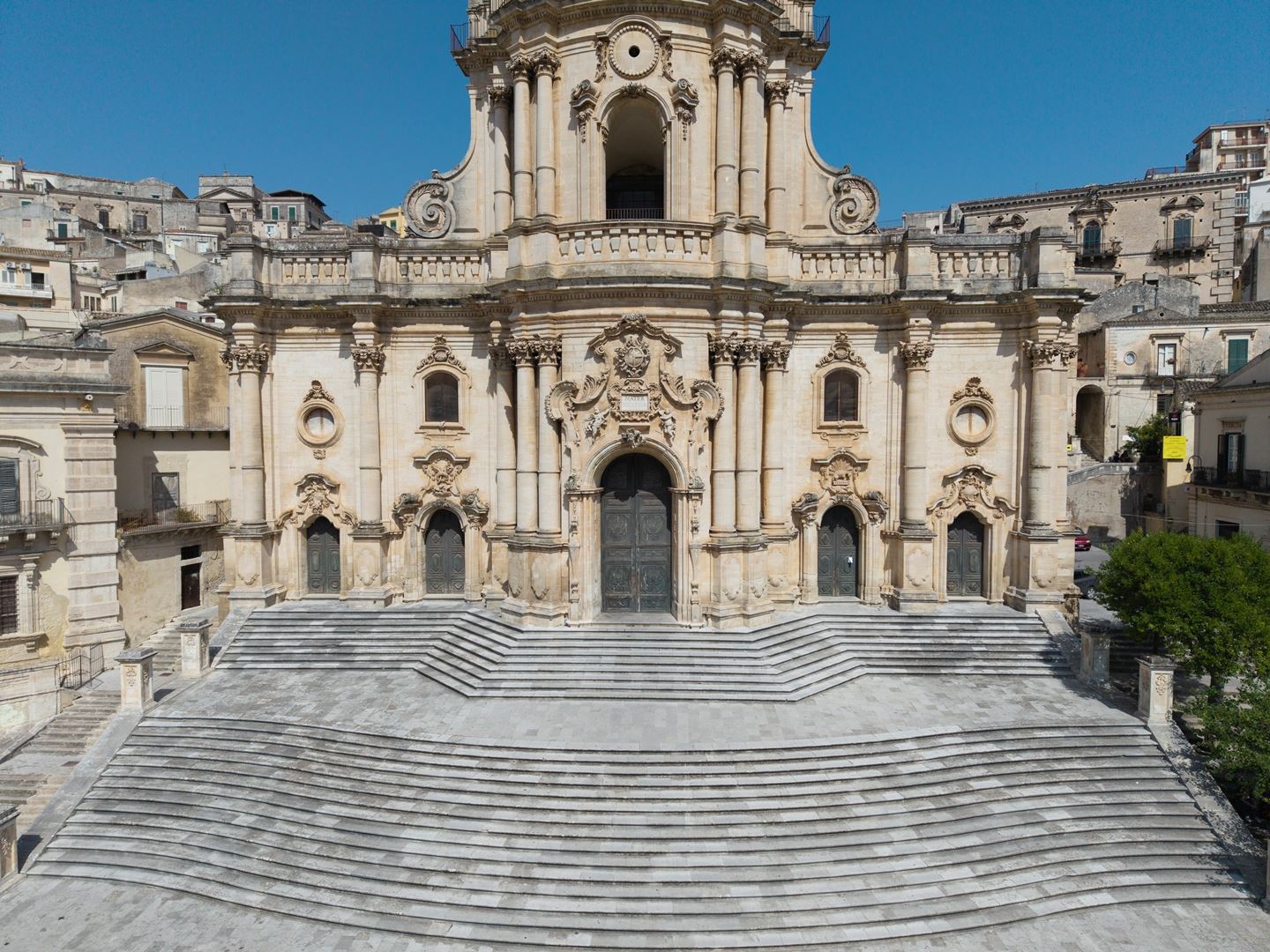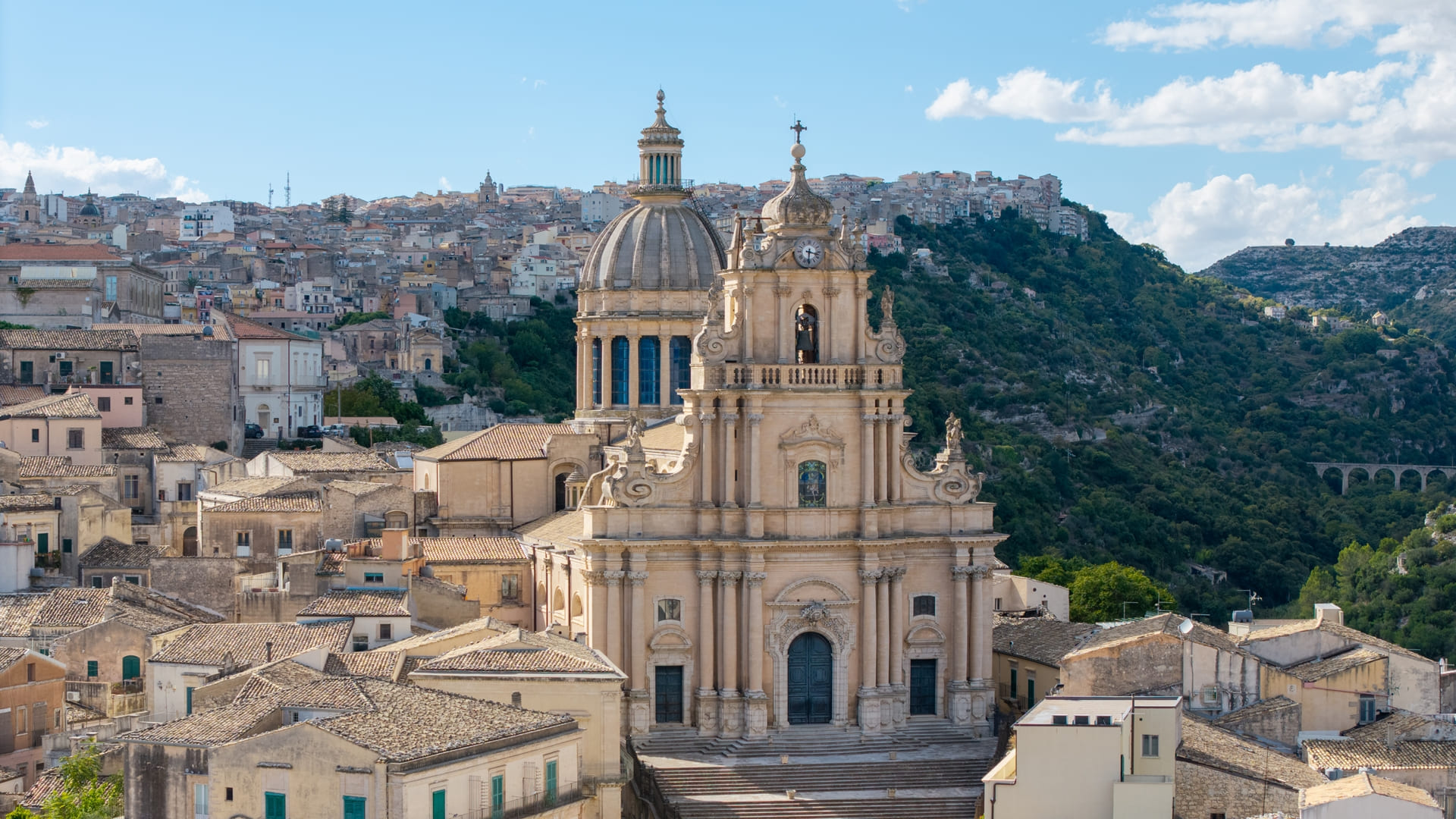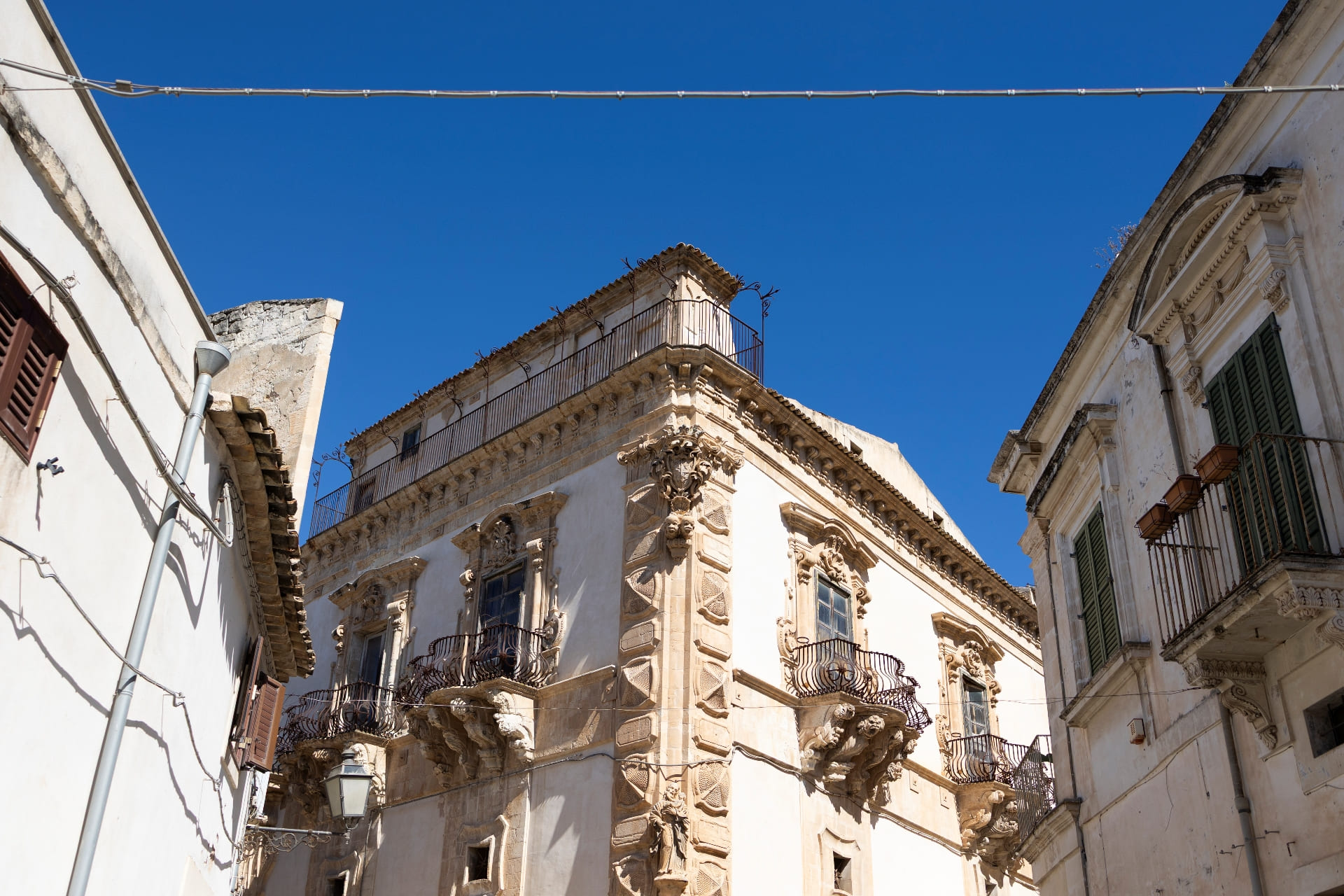Scopri le città tardo-barocche della Val di Noto, dichiarate Patrimonio dell’Umanità dall’UNESCO. Un viaggio tra chiese, palazzi e vie storiche che raccontano la rinascita post-terremoto del 1693.
Itinerario UNESCO

The route:

Duomo di San Giorgio
The Cathedral of San Giorgio is Modica's most majestic monument and one of the masterpieces of Sicilian Baroque. It was built over medieval buildings after the arrival of Ruggero d'Altavilla and, rebuilt several times after major earthquakes (1542, 1613, 1693), took on its current appearance between the 18th and 19th centuries. Architectural masterpieces such as the scenic staircase (up to 260 steps) and the 62 m high tower-facade emphasise its theatricality. Inside, a Latin-cross layout with 22 Corinthian columns, stucco work, frescoes, a monumental organ and works by Bernardino Nigro, Paladini, Cane and sculptors from Gagini create an impressive artistic itinerary. The floor sundial from 1895 and the “Santa Cassa” increase the cultural and historical value. A place of faith and identity, every year it is the scene of solemn processions, in particular that of St George, the city's patron saint. A UNESCO World Heritage Site, it is an essential stop for anyone visiting Modica who wants to immerse themselves in the splendour of the Eastern Baroque.


Cathedral of San Pietro

The Castle of the Counts of Modica
Palace La Rocca

Square Duomo and the Church of San Giorgio


Palace Beneventano


Church of San Bartolomeo


Quarry of Ispica and Forza Park


Basilica of Santa Maria Maggiore and the Sinatra Loggia

